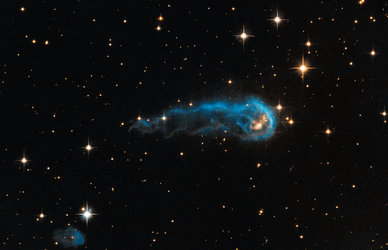Accept all cookies Accept only essential cookies See our Cookie Notice

About ESA
The European Space Agency (ESA) is Europe’s gateway to space. Its mission is to shape the development of Europe’s space capability and ensure that investment in space continues to deliver benefits to the citizens of Europe and the world.
Highlights
ESA - United space in Europe
This is ESA ESA facts Member States & Cooperating States Funding Director General Top management For Member State Delegations European vision European Space Policy ESA & EU Space Councils Responsibility & Sustainability Annual Report Calendar of meetings Corporate newsEstablishments & sites
ESA Headquarters ESA ESTEC ESA ESOC ESA ESRIN ESA EAC ESA ESAC Europe's Spaceport ESA ESEC ESA ECSAT Brussels Office Washington OfficeWorking with ESA
Business with ESA ESA Commercialisation Gateway Law at ESA Careers Cyber resilience at ESA IT at ESA Newsroom Partnerships Merchandising Licence Education Open Space Innovation Platform Integrity and Reporting Administrative Tribunal Health and SafetyMore about ESA
History ESA Historical Archives Exhibitions Publications Art & Culture ESA Merchandise Kids Diversity ESA Brand Centre ESA ChampionsLatest
Space in Member States
Find out more about space activities in our 23 Member States, and understand how ESA works together with their national agencies, institutions and organisations.
Science & Exploration
Exploring our Solar System and unlocking the secrets of the Universe
Go to topicAstronauts
Missions
Juice Euclid Webb Solar Orbiter BepiColombo Gaia ExoMars Cheops Exoplanet missions More missionsActivities
International Space Station Orion service module Gateway Concordia Caves & Pangaea BenefitsLatest
Space Safety
Protecting life and infrastructure on Earth and in orbit
Go to topicAsteroids
Asteroids and Planetary Defence Asteroid danger explained Flyeye telescope: asteroid detection Hera mission: asteroid deflection Near-Earth Object Coordination CentreSpace junk
About space debris Space debris by the numbers Space Environment Report In space refuelling, refurbishing and removingSafety from space
Clean Space ecodesign Zero Debris Technologies Space for Earth Supporting Sustainable DevelopmentApplications
Using space to benefit citizens and meet future challenges on Earth
Go to topicObserving the Earth
Observing the Earth Future EO Copernicus Meteorology Space for our climate Satellite missionsCommercialisation
ESA Commercialisation Gateway Open Space Innovation Platform Business Incubation ESA Space SolutionsEnabling & Support
Making space accessible and developing the technologies for the future
Go to topicBuilding missions
Space Engineering and Technology Test centre Laboratories Concurrent Design Facility Preparing for the future Shaping the Future Discovery and Preparation Advanced Concepts TeamSpace transportation
Space Transportation Ariane Vega Space Rider Future space transportation Boost! Europe's Spaceport Launches from Europe's Spaceport from 2012Latest

Thackeray's Globules in IC 2944
Strangely glowing dark clouds float serenely in this remarkable and beautiful image taken with the NASA/ESA Hubble Space Telescope. These dense, opaque dust clouds - known as "globules" - are silhouetted against against the red glow of hydrogen gas and bright stars in the busy star forming region, IC 2944. These globules were first found in IC 2944 by astronomer A.D. Thackeray in 1950.
Although globules like these have been known since Dutch-American astronomer Bart Bok first drew attention to such objects in 1947, little is known about their origin and nature, except that they are generally associated with large areas of star-formation, called "HII regions" due to the presence of hydrogen gas.
Thanks to the remarkable resolution offered by the Hubble Space Telescope, astronomers can, for the first time, study the intricate structure of these globules. The globules appear to be fragmented, as if in the process of being torn apart. When radio astronomers observed the faint hiss from molecules within the globules, they realised that the globules are actually in constant, churning motion, moving supersonically among each other. This chaotic motion may be caused by the powerful ultraviolet radiation from the luminous, massive stars. These stars also heat the glowing hydrogen gas, causing it to expand against the globules, leading to their destruction. Despite their serene appearance, the globules may actually be likened to clumps of butter put onto a red-hot pan.
-
CREDIT
NASA/ESA and The Hubble Heritage Team (STScI/AURA) -
LICENCE
ESA Standard Licence

A frEGGs-cellent discovery

A frEGGS-plosion of star formation

The Tadpole and the Wriggler

'An Infrared negative of a bright nebula'















 Germany
Germany
 Austria
Austria
 Belgium
Belgium
 Denmark
Denmark
 Spain
Spain
 Estonia
Estonia
 Finland
Finland
 France
France
 Greece
Greece
 Hungary
Hungary
 Ireland
Ireland
 Italy
Italy
 Luxembourg
Luxembourg
 Norway
Norway
 The Netherlands
The Netherlands
 Poland
Poland
 Portugal
Portugal
 Czechia
Czechia
 Romania
Romania
 United Kingdom
United Kingdom
 Slovenia
Slovenia
 Sweden
Sweden
 Switzerland
Switzerland
























